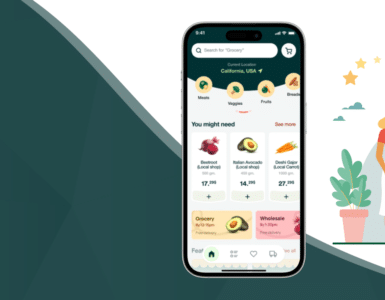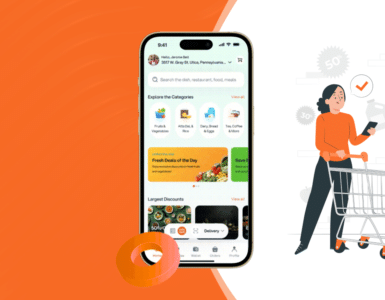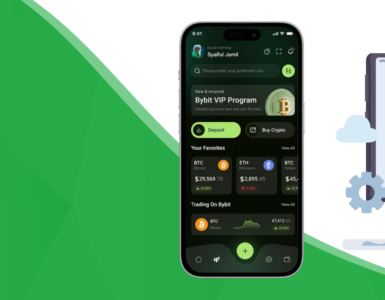In the ever-evolving world of mobile app development, businesses and developers are in a constant race to deliver high-performing, cost-effective, and user-friendly apps. One framework that has become a game-changer in recent years is React Native. Powered by Facebook, React Native enables developers to build mobile applications for both Android and iOS platforms using a single codebase—drastically reducing development time and cost.
Unlike traditional native development, which requires separate coding for iOS and Android, React Native uses JavaScript and JSX (a syntax extension) to create visually rich and functionally powerful apps. From startups to global giants, companies have embraced React Native to create world-class mobile experiences.
Let’s explore the 11 most successful and popular apps built using React Native, followed by a comprehensive guide on how you can build your own messaging app like WhatsApp using this framework.
11 Popular Mobile Apps Built With React Native
It’s no surprise that Facebook itself was the pioneer of React Native. Initially developed to support iOS, it was later extended to Android as well. The engineering team observed up to 50% performance improvement by refactoring the core parts of their app using React Native.
The framework allowed smooth integration with native components like Swift, Java, and Objective-C, enabling Facebook to maintain hybrid development with seamless user experience.
- Bloomberg
A financial information and media powerhouse, Bloomberg needed an app that could provide real-time personalized news, videos, and live feeds. React Native was chosen to power its mobile experience for both iOS and Android. The main advantage? Faster feature rollout and real-time code updates without recompilation.
- Uber Eats
Although Uber’s core app isn’t built entirely in React Native, Uber Eats uses it in its restaurant dashboard interface. As users migrated from desktop to mobile, Uber needed a flexible and efficient solution—and React Native fit the bill perfectly for their time-sensitive updates and delivery systems.
- Walmart
With millions of global users, Walmart always stays ahead with innovation. Initially adopting Node.js for backend, the retail giant transitioned its mobile app to React Native. The results were impressive: flawless animations, faster performance, and improved RAM & CPU efficiency.
- Tesla
Tesla’s vehicle control app for Android and iOS is developed using React Native. It lets users control lights, horn, locks, and even the charger of their Tesla cars. The consistent performance and unified codebase across platforms made React Native the obvious choice for Tesla’s elite audience.
- Adidas GLITCH
Designed for soccer gear sales, the GLITCH app delivered a unique shopping experience with a skin/sock product customization feature. After its iOS launch, the team quickly rolled out the Android version using React Native—earning 12 industry awards post-launch.

- SoundCloud Pulse
A must-have for musicians and creators, SoundCloud Pulse allows users to manage tracks, respond to comments, and view stats. React Native was adopted after challenges in finding iOS developers. The team later acknowledged that React Native allowed faster iteration and better collaboration between teams.
Instagram integrated React Native to support parts of their app like push notifications and the Stories feature. Despite initial challenges, developers appreciated the code reuse and efficient refactoring React Native offered.
- Airbnb
While Airbnb eventually sunset React Native due to its complexity with native infrastructure, during its usage period, it benefited from high code reusability and faster prototyping—proving that React Native can be viable for rapid MVP development.
This visually-driven app used React Native to simplify development across platforms. With improved developer experience and design consistency, Pinterest delivered a robust mobile product while reducing duplication of effort.
- Gyroscope
This health-focused app aggregates fitness and wellness data in a visually engaging interface. Integrated with HealthKit, Gyroscope provides weekly and monthly insights on fitness goals. React Native enabled its developers to build a consistent, responsive experience across iOS and Android.
Thinking of Building the Next WhatsApp with React Native?
Messaging apps dominate the app world. Just look at WhatsApp—over 2 billion monthly active users and counting. If you’re considering building a chat app like WhatsApp, React Native is a strong contender.
Let’s break down how to create a WhatsApp-like app using React Native.
Key Features to Include in a WhatsApp-Like App
- Text Messaging (One-on-One & Group)
- Voice and Video Calling
- Media Sharing (Images, Audio, Video)
- Live Location Sharing
- Contact Sharing
- Voice Notes
- Status/Stories (24-hour Posts)
- Push Notifications
- Encrypted Chat
- User Authentication (Phone Number, OTP)
- Profile Management (Name, Photo, About)
How to Build a WhatsApp-Like App Using React Native
- Define the App’s Purpose & Monetization Strategy
Are you building for general users, businesses, or specific industries? Will you offer it free, ad-based, or as a paid service?
- Choose the Right Development Team
You’ll need experienced React Native developers along with backend experts (Node.js, Firebase, etc.) and DevOps for scaling.
- Design Your Architecture
- Use Firebase or AWS for real-time databases.
- Implement WebSockets or third-party services like Pusher for live messaging.
- Use Twilio or Agora for real-time calling functionality.
- Create a Minimum Viable Product (MVP)
Start with core features:
- Chat
- Contact List
- File Sharing
- Authentication
Expand based on user feedback.
- Prioritize Security
- Implement end-to-end encryption.
- Use secure token-based authentication (JWT).
- Enable two-factor authentication.
Development Cost Estimate for MVP
| Feature | Hours | Cost (at $50/hr) |
| User Registration (OTP) | 50 | $2,500 |
| One-on-One Messaging | 200 | $10,000 |
| Group Messaging | 100 | $5,000 |
| Push Notifications | 20 | $1,000 |
| Media Sharing | 40 | $2,000 |
| Voice/Video Calling | 250 | $12,500 |
| Live Location Sharing | 30 | $1,500 |
| Total Estimate | ~690 | $34,500 |
Note: Prices may vary based on region. Developers in India typically charge $20–$50/hour, making it more cost-effective.
Final Thoughts
React Native is more than just a buzzword—it’s the backbone of some of the world’s most popular mobile applications. Whether you’re developing a fintech dashboard, an eCommerce platform, or the next big messaging app, React Native provides the flexibility, performance, and community support you need.
So, if you’re inspired by the success stories of Facebook, Bloomberg, Uber Eats, and others, now is the perfect time to kickstart your React Native journey.
Ready to Build?
We’re a leading React Native development company with a team of skilled professionals ready to bring your app idea to life. Whether you’re a startup or an enterprise, we help you build scalable, secure, and user-friendly mobile apps tailored to your needs.
📞 Contact us today to schedule a free consultation and start building your next big app with React Native.
























